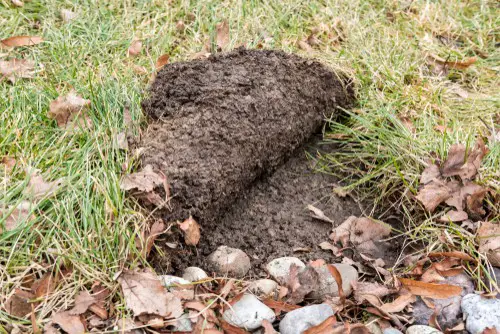One of the great advantages of installing sod as opposed to growing grass from the seed is you get a lush green lawn right away. With all the effort and money it costs to install sod, new sod turning brown is quite a nuisance.
Since you can’t resurrect brown grass, knowing what leads to new sod turning brown can help you avoid this pesky problem. Proper lawn care is crucial when waiting for your sod to take root where it’s been laid. Setting the sod in place and expecting it to stay green with occasional watering isn’t going to work out well.
The good news is that you only need to give it extra care temporarily to ensure it establishes itself in the ground, then regular lawn maintenance should be adequate to keep your new sod looking new.
If you’ve recently installed new sod, you may be alarmed if you start seeing patches of brown or yellow grass appearing. However, don’t worry, because there are several simple steps you can take to revive your lawn and bring it back to its lush, green state.
Proper Installation Techniques for Healthy Sod Growth
Proper installation techniques are crucial for ensuring the healthy growth of new sod. Homeowners need to understand the importance of careful sod installation, as it directly impacts the roots’ ability to establish themselves in the soil.
This involves removing any debris or existing grass, preparing the soil adequately, and laying the sod with precision. By following these steps, the roots can make strong connections with the soil, allowing for proper water and nutrient absorption.
Providing detailed instructions and tips on proper installation techniques will empower homeowners to create the optimal conditions for their sod to thrive.
New Sod Turning Brown
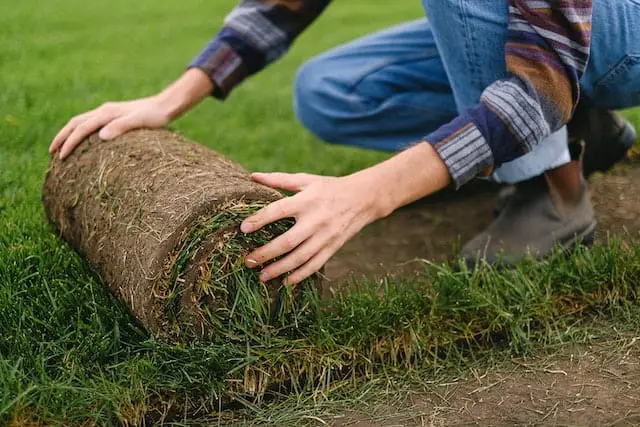
New sod is not supposed to turn brown when cared for sufficiently. Most things that cause browning sod are in your control, though some aren’t. When you hire someone to install sod for you, they will usually equip you with tips to maintain its health, but if you do it yourself, you’ll have to learn those tips yourself.
Sod has a lot of advantages over laying down grass seed, as well as a few disadvantages. Most homeowners prefer sod because it’s made of sections of grass that has already been cultivated.
A common misconception, however, is that just because the grass has already grown, all it needs is some water and weed pulling occasionally. Once you’re able to diagnose the reason why your sod is turning brown, the next step is to tackle the situation and avoid it in the future.
Some of the most common causes of these issues have some pretty simple solutions like changing your lawn maintenance habits, while others will involve a little more hands-on work.
When sod goes brown, even in small patches, that means that grass is dead and there’s no saving it. You’ll have to pull and replace those patches or strips with new sod, then make sure you don’t make any of the avoidable mistakes that usually lead to new sod turning brown.
1. Roots Aren’t Implanting Into The Soil
Sod needs to be installed very carefully so that its roots are able to nestle themselves into the soil. If there is any space between the sod and the soil where air can get through, it will, leaving the roots unable to find their home.
Furthermore, roots in the soil make sure that water and other important nutrients are able to make themselves into the grass.
Your grass is not going to be able to grow if the roots can’t become embedded in the soil. Instead, it’ll start to wither away, eventually turning brown. The good news is that it’s fairly easy to fix this issue, especially compared to other common causes of browning sod.
What you can do if you notice brown patches and the grass hasn’t quite settled into the soil is pull up the areas where you see browning and poke some holes into the soil.
Push the sod piece back into the soil very firmly so it can make that much-needed connection. Be sure you water the spot consistently and thoroughly for a bit, and the roots should implant.
2. Insufficient Water
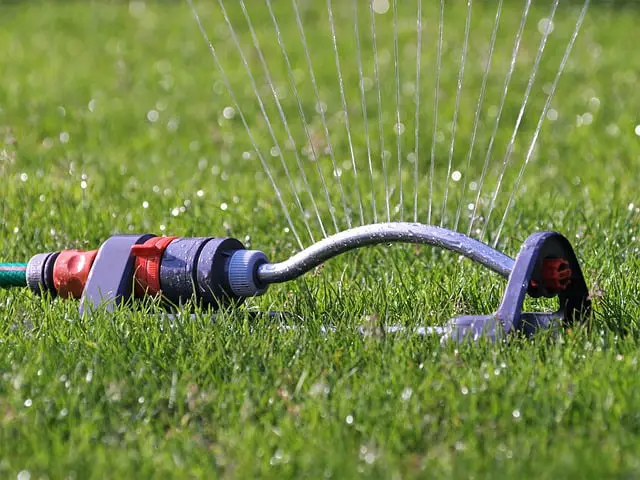
As with any type of plant, water is crucial to its survival. New sod is going to be very thirsty, but too much water is just as bad as too little water. It can be difficult to find the perfect balance, but there are some best practices you can follow that should keep your grass supple and green.
After your sod is laid down, it’s going to need water at least twice every day for the first couple of weeks. Your sod could need more if you happen to have installed it during the summer. After the first couple of weeks, you’re safe to water your sod once a day or once every other day for the rest of the month.
When that first month passes, your sod should only need water once or twice a week depending on weather conditions for the week.
Effective Watering Practices for Vibrant Sod
Watering is a key factor in maintaining vibrant and healthy sod. It is important to strike the right balance between under-watering and over-watering. During the first few weeks after installation, new sod requires frequent watering to support root establishment.
As the sod matures, watering frequency can gradually be reduced. Homeowners should adjust their watering schedule based on weather conditions, ensuring the sod receives adequate moisture without becoming waterlogged.
By educating homeowners about the significance of proper watering practices and offering guidelines for different stages of sod growth, they can avoid the issue of browning sod and achieve a lush green lawn.
3. Improper Fertilization
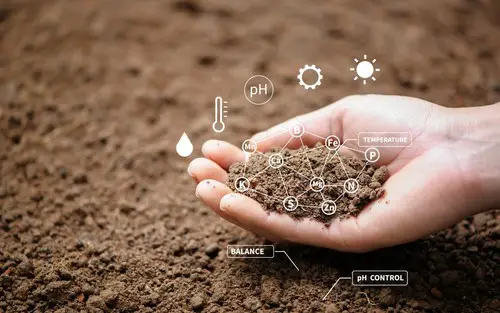
You don’t want to forget to fertilize your new sod, but that’s easier said than done. Since you don’t need to fertilize sod right away, it could completely slip your mind, causing grass to struggle to retain the nutrients it needs to stay healthy. Fertilizer is essentially food for your sod, and if it doesn’t get to eat, it’s going to starve.
New sod doesn’t need to be fertilized until a month to two months after it’s been installed. The roots of the grass need to have a chance to make the soil their home. If you put down fertilizer before this time, it could end up killing parts of your grass because it can’t eat that fertilizer like it needs to yet.
Your grass will essentially get burned and, while it’s possible to bring that brown sod back to health, it’s not easy. You’ll want to soak those burned spots in some water to wash those chemicals away, then try to fertilize again when appropriate.
Fertilization Tips to Nourish New Sod
Proper fertilization is essential for providing the necessary nutrients to new sod. However, timing and technique are crucial to avoid damaging the grass. It is important to wait until the roots have firmly established themselves before applying fertilizer. This allows the sod to utilize the nutrients effectively.
Homeowners should be educated about the appropriate timing for fertilization and the types of fertilizers suitable for their specific sod type. Additionally, guidance on addressing burnt or damaged sod due to improper fertilization is vital. By following these fertilization tips, homeowners can nourish their new sod, ensuring its health and vitality.
4. Lawn Interference From Pests Or Other Sources
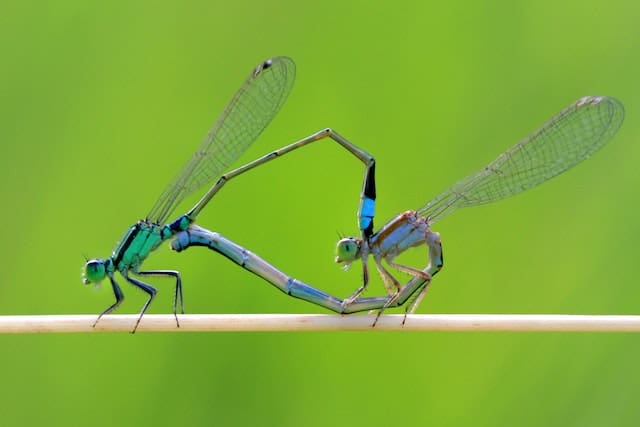
All kinds of insects can turn your grass into their home or their kitchen, leaving patches of brown sod in their wake. This might mean you need some kind of pesticide treatment to keep the buggers away, but that’ll depend on whether you have pets or what kind of bugs you’re dealing with.
Simple things like weeds that aren’t pulled or dogs peeing in the same place all the time can lead to browning sod as well. These can be fixed by maintaining your lawn with regular pruning and pulling of weeds, and designating a spot with some artificial grass for your pets to pee on.
Preventing Pest Infestation and Lawn Interference
Preventing pest infestation and minimizing lawn interference are essential for maintaining the health of new sod. Homeowners should be able to identify common pests that can damage the sod and implement suitable pest control measures.
It is important to strike a balance between pest control and pet safety, using pet-friendly methods to protect the lawn. Additionally, managing weed growth and preventing interference from pets, such as designated areas for them to relieve themselves, will help maintain the integrity of the sod.
By providing homeowners with strategies for pest control and lawn interference prevention, they can safeguard their sod and enjoy a beautiful, pest-free lawn.
Learn more from another post: Leyland Cypress Turning Brown
Summary
It’s sad when you work so hard on improving your lawn with new sod, only to discover your new sod turning brown. Whether or not you can fix the issue depends, so trying to stop any future sod from going brown will be the key to a happy and healthy lawn that you can enjoy for many more seasons.
Frequently Asked Questions
How Do You Revive Newly Laid Sod?
Depending on why your new sod has wilted, there may not be anything you can do to revive it. Your best bet is to replace it unless you’re able to try and re-establish roots back into the soil. Be sure you add proper watering and have new sod installed well so the issue doesn’t reoccur.
What Causes Brown Patches In New Sod?
Brown patches are often caused by something interfering with or leeching off of your sod and its nutrients. This could be anything from pet waste to bugs to weeds. You’ll have to do some investigating to determine the exact problem you’re dealing with and treat it appropriately.
Will Dead Sod Come Back?
Dead sod will not come back, unfortunately. Sometimes it might seem to, but that’s because your sod is actually laying dormant in an effort to preserve nutrients and hasn’t actually died. Any grass that has gone dormant can spring back to life, and usually does.

Hey, I’m Lisa and I’ve been an avid gardener for over 30 years. I love writing, talking and living in the garden! Feel free to connect with me on my socials below

